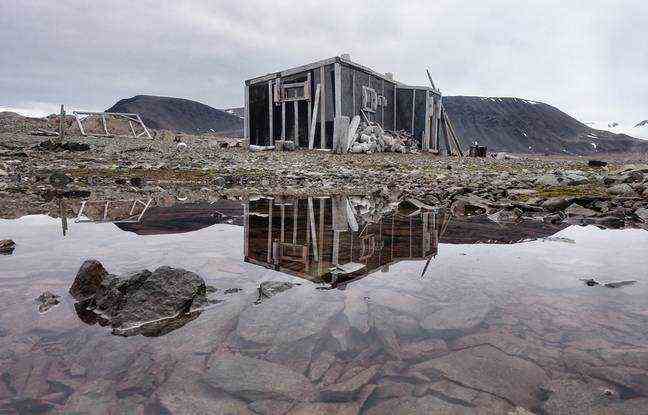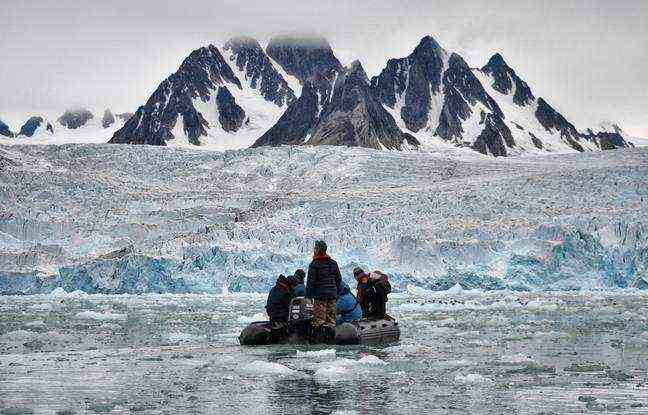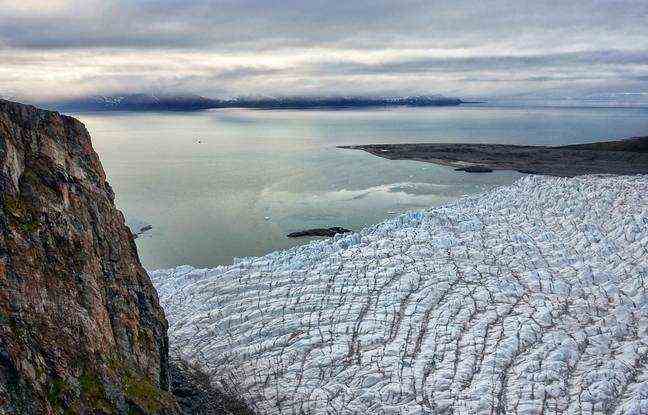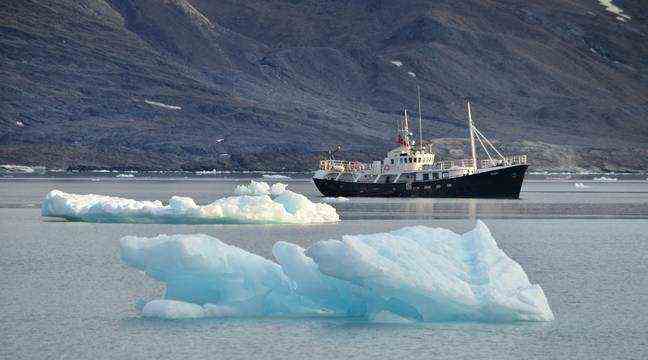We can’t miss them. At the three exits of Longyearbyen, “Beware of polar bears” signs warn the daring passing through these extreme confines: gjelder hele Svalbard (valid everywhere in Svalbard)! Beyond these limits, the Norwegian archipelago of the “Cold coasts” is the kingdom of approximately 3,500 plantigrades as powerful as they are unpredictable. Longyearbyen, the northernmost human colony on the planet, brings together only 1,600 souls who have made the bear their mascot. From April to September, when the midnight sun raises the thermometer above zero, this “capital” becomes the starting point for exceptional cruises around the
Spitsbergen, the main island of Svalbard, meeting its arctic nature and its iconic superpredator.
A church, two museums, duty-free shops and a few pubs allow the twelve passengers of the MV Togo to wait in Longyearbyen before boarding. Converted into a polar expedition boat, this former fishing vessel chartered by
Secret Atlas is able to enter fjords inaccessible to conventional size boats. The concept of micro-cruising defended by the company is based on this ability to approach as well as on the flexibility of the route. At the start of the journey, the expedition leader Andreas Umbreit has only one certainty: the meaning of circumnavigation. “The rest of the program will depend on the wishes of the group, the opportunities for observations and above all the vagaries of the weather …” Each trip to Togo thus draws, over the days, a unique itinerary.
A coveted land
By virtue of their geographical location, halfway between the Russian islands of Franz Joseph and Greenland, at 78 degrees North latitude, the icy solitudes of Svalbard have long stirred the appetite of men with various motivations. Whale hunters, trappers, explorers, miners, strategists and scientists have all settled in this polar Far West.

Spitsbergen owes its name of “Island of the pointed mountains” to the Dutchman Willem Barentsz who discovered it in 1596. The navigators, who then explored it, related the abundance of cetaceans in its deep fjords. At a time when Europe was lighting up with oil, it did not take more to trigger gigantic hunting campaigns, slaughtering whales and walruses until their virtual disappearance.

In the 19th century, the archipelago, still free of sovereignty, was also a base camp for resounding expeditions to conquer the North Pole, barely a thousand kilometers away. It was not until 1920 that the “Treaty concerning Spitsbergen” assigned the administration of the archipelago to Norway. Since Svalbard’s permafrost contained excellent quality coal, a clause in the treaty authorized each of the signatory nations to set up a mining concession there. Since then, the value of this polluting ore has plummeted, but Russia still maintains its presence in Barentsburg at great expense. An unusual stopover for passengers from Togo who can taste the most northerly brewed beer in the world, under the unruffled gaze of Lenin.
The laws of nature
Although the Russian presence in Barentsburg today is more geopolitical than economic, Svalbard remains a totally demilitarized natural sanctuary. The territory has three national parks and about fifteen ornithological reserves. Since 1993, the archipelago has also had its university where biologists, geologists, glaciologists and geophysicists from all over the world are invited to study the polar environment. From Togo, the daily zodiac excursions are all opportunities for naturalistic observations. Some 165 species of plants attract around thirty varieties of migratory birds, such as murres, puffins, terns and even fulmars, which seem to have fun surfing on the air currents created by the ship.

The hikes on land, in the assault of the moraines allow to gain a little height. No path is marked out on this virgin land where we walk with small cautious steps on heaps of rocks exploded by frost. But the efforts are rewarded by the spectacle of glaciers whose seracs are declined in infinite variations of blue. The entrails of these giants retain dust, pollen, water and air dating back thousands of years. So many fragments of eternity that inexorably end up dissolving in the ocean. A pioneer of tourism in Svalbard, Andreas Umbreit observes: “Some glaciers have retreated by several hundred meters since my arrival in the region in 1986”.

Global warming, particularly sensitive at these latitudes, also affects the sea ice, so important in the way of life of polar bears. Some of them spend most of their lives there hunting seals. This year, Togo must sail beyond the archipelago, up to 81 degrees North to finally see this king of the Arctic slumped on his throne of ice. This one is sated. Its bloody muzzle betrays a recent feast of fresh meat. A few photos to immortalize the meeting and the frozen passengers must already take refuge in the heat of the boat. Because it is so in this region as beautiful as it is inhospitable. The same rule applies to all living things: survive.
Go
Svalbard is not a member of the Schengen area. Its access therefore requires the presentation of a valid passport and, since July 2021, a European Covid certificate. At Longyearbyen airport, a larger-than-life polar bear immediately puts travelers in the mood! The destination is served several times a week, in just 3 hours from Oslo, but at times that often require you to wait overnight, both on the way there and on the way back.
Located two minutes flat from the International Terminal, the Radisson Blu Airport Oslo Gardermoen is the most practical address to spend these nights of transit in all serenity. Its large, elegantly decorated and well-equipped rooms are ideal for resting. At breakfast time, a huge buffet allows you to envision your trip with full energy.
Micro cruises
With a maximum of twelve passengers on board, MV Togo’s voyages fall into the category of micro expedition cruises. In Svalbard, this formula of intimate circuits is the Secret Atlas specialty. This young Anglo-Italian company, founded by two enthusiasts of polar latitudes, offers unique experiences in a spirit of exploration.
Far from the routes taken by larger capacity boats, Togo’s itineraries are designed to experience the reality of the Arctic as closely as possible. Its low number of passengers guarantees quick transfers by zodiac to the shore to enjoy the wild life for longer, without disturbing it. Indeed, these trips in small groups have a reduced impact on the environment. They also promote conviviality while maintaining a high level of health requirements.
Two types of tours are offered, 9 or 15 days, with certain departures dedicated to photographers. No expense is expected on board Togo. Everything is included, from tasty meals to drinks and cakes shared in the comfortable lounge each time you return from your excursion. Note that no internet connection is to be hoped for in these ends of the world.

